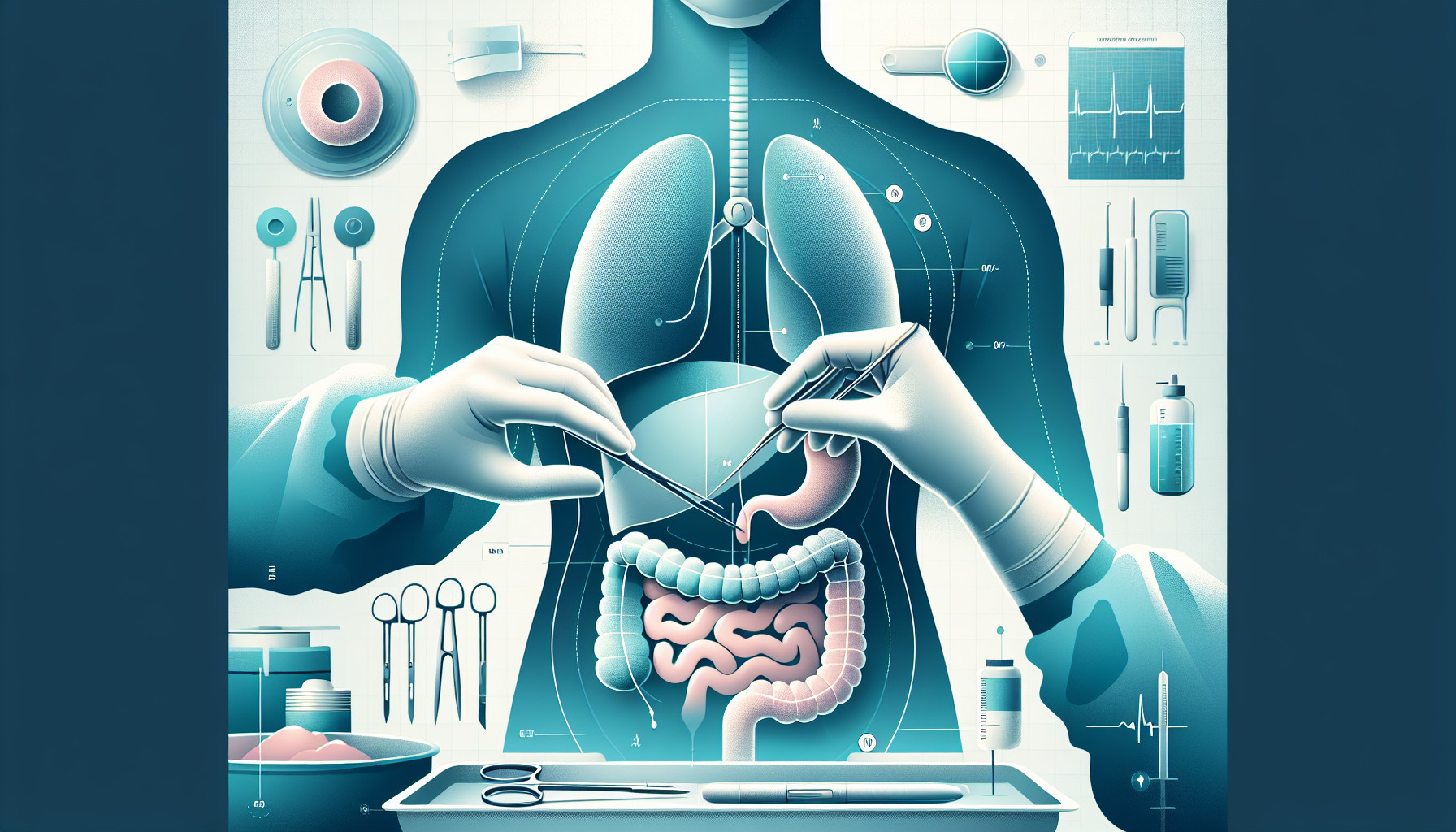Our Summary
This research paper discusses a study of 15 cases where a hiatal hernia (a condition where part of the stomach bulges up into the chest through an opening in the diaphragm) was repaired using a specific method. The method used reinforcement material made from urinary bladder matrix (UBM), a biologically derived material, instead of synthetic mesh, which can sometimes lead to complications like infection and erosion.
The patients were followed up for three years after their surgeries. They were checked for any signs of recurrence and symptoms of gastroesophageal reflux disease (GERD), a chronic disease where stomach acid frequently flows back into the tube connecting your mouth and stomach.
The study found that the hernia repair was successful in each case and there were no complications or recurrences in more than three years of follow-up. The patients also reported little reflux symptomatology, indicating that the surgery was successful in managing GERD symptoms.
Based on these findings, the researchers concluded that this method of hiatal hernia repair using UBM reinforcement is safe and may be a good alternative to synthetic mesh reinforcement.
FAQs
- What is the method used in this study for hiatal hernia repair?
- What were the results of the hiatal hernia repair using UBM reinforcement?
- How does UBM reinforcement compare to synthetic mesh reinforcement based on the findings of this study?
Doctor’s Tip
A helpful tip a doctor might tell a patient about hiatal hernia repair using UBM reinforcement is to follow post-operative care instructions carefully to ensure proper healing and minimize the risk of complications. This may include avoiding heavy lifting, sticking to a soft diet for a period of time, and taking any prescribed medications as directed. Additionally, maintaining a healthy lifestyle with a balanced diet and regular exercise can help prevent future hernia issues. Regular follow-up appointments with your healthcare provider are also important to monitor your progress and address any concerns.
Suitable For
Patients who are typically recommended hiatal hernia repair are those who have symptomatic hiatal hernias that are causing discomfort or complications, such as GERD or difficulty swallowing. Patients who have failed to respond to conservative treatments like medication or lifestyle changes may also be candidates for surgery. Additionally, patients who have large hiatal hernias or hernias that are at risk for complications like strangulation may be recommended for repair. It is important for patients to discuss their symptoms and medical history with their healthcare provider to determine if hiatal hernia repair is the appropriate treatment option for them.
Timeline
Before the hiatal hernia repair:
- Patient experiences symptoms of hiatal hernia such as heartburn, chest pain, difficulty swallowing, and regurgitation of food.
- Patient undergoes diagnostic tests such as endoscopy, barium swallow, and pH monitoring to confirm the diagnosis.
- Patient discusses treatment options with their healthcare provider, which may include lifestyle changes, medications, or surgery.
After the hiatal hernia repair:
- Patient undergoes surgery to repair the hiatal hernia using UBM reinforcement material.
- Patient is monitored closely post-surgery for any complications or signs of recurrence.
- Patient is followed up for three years to assess the success of the surgery and monitor for any symptoms of GERD.
- Study finds that the surgery is successful in all cases, with no complications or recurrences reported.
- Patients report minimal reflux symptoms, indicating successful management of GERD.
Overall, the patient experiences relief from symptoms of hiatal hernia and GERD after undergoing successful hiatal hernia repair using UBM reinforcement.
What to Ask Your Doctor
Some questions a patient should ask their doctor about hiatal hernia repair using UBM reinforcement may include:
- What are the potential risks and benefits of using UBM reinforcement for hiatal hernia repair compared to using synthetic mesh?
- How long is the recovery time after surgery using UBM reinforcement compared to traditional methods?
- Are there any specific dietary or lifestyle changes I should make after the surgery to ensure successful healing?
- How likely is it for the hernia to recur after surgery using UBM reinforcement, based on your experience and the findings of this study?
- Will I need any follow-up appointments or tests to monitor the success of the surgery and my overall health after the procedure?
- Can you explain the specific technique used for hiatal hernia repair with UBM reinforcement, and how it differs from other methods?
- What other treatment options are available for hiatal hernia repair, and why do you recommend using UBM reinforcement in my case?
- How experienced are you in performing hiatal hernia repairs using UBM reinforcement, and what is your success rate with this technique?
- Are there any specific pre-operative or post-operative instructions I need to follow to ensure the best outcome of the surgery using UBM reinforcement?
- How can I best manage any potential symptoms of GERD after the surgery, and when should I contact you if I experience any complications or concerns?
Reference
Authors: Sasse KC, Warner DL, Ackerman E, Brandt J. Journal: JSLS. 2016 Apr-Jun;20(2):e2016.00016. doi: 10.4293/JSLS.2016.00016. PMID: 27186066
